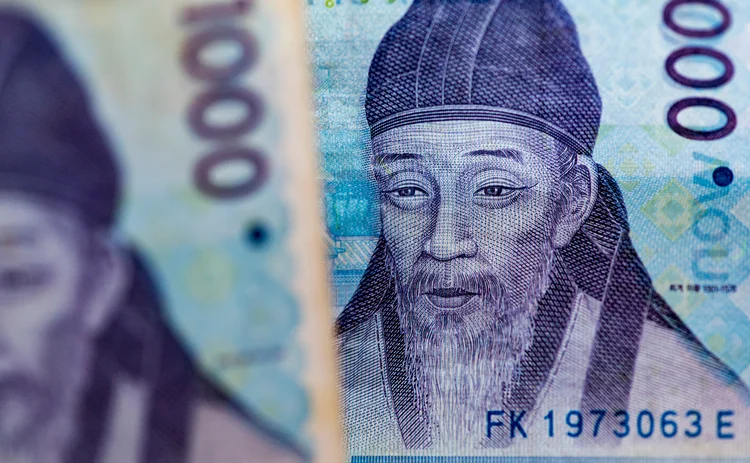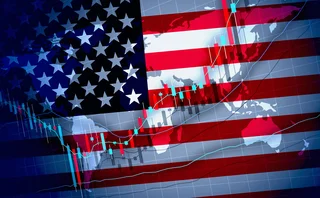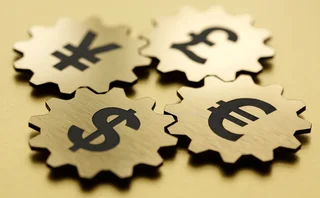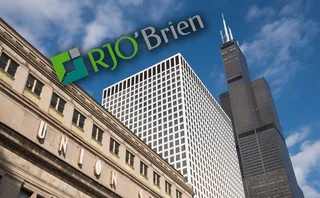
Korea autocall dealers brace for losses but no 2015 repeat
Traders dampen fears of hedging wipeout despite 20% drop in HSCEI underlying index

A sharp decline in Chinese stocks traded in Hong Kong has drawn parallels to a crash, three years earlier, that resulted in hedging losses for Asian structured products desks. However, dealers are quietly confident the ghosts of 2015 will remain at bay – at least for now.
Three years ago, China’s Black Monday disruption saw the Hang Seng China Enterprises Index drop 40% from its peak, battering Korean equity-linked securities that included the index as an underlying. The rout resulted in estimated hedging losses of $300 million for trading desks. This time around traders say the losses will be lower, even in the worst case scenario. Structural changes introduced since 2015 will also help limit any damage, issuers say.
“In 2015 it was a mess with traders working the phones to find vega and electronic channels choked with one-way orders. We had long days and even longer nights,” says an equity derivatives trader at a European bank in Hong Kong. “With memories of those moments still intact, we are relatively sure we won’t see a repeat.”
The performance of the index over coming weeks and months could put that forecast to the test. The HSCEI has ceded a fifth of its value this year as China and the US exchange blows over trade. In July, South Korea’s financial regulator sounded a warning about securities linked to the ailing index and indicated it could step in to restrict the HSCEI’s use in structured products.
Some dealers say another 13% fall on the HSCEI from its level of 11,000 on July 27 could – in the most pessimistic scenario – drive a volatility surge of a similar scale to 2015. If convexity also steepens and correlation rises, hedging losses of $240 million could be racked up, they warn.
Others, though, say the fears are overblown: “There is a little bit of sensationalism here when people compare the situation with what happened in 2015,” says Bharat Sachanandani, head of flow strategy and solutions for Asia-Pacific at Societe Generale. “That was preceded by a euphoric rise where the HSCEI touched almost 15,000 and products were issued all along the way. So the deep correction didn’t just take us past peak vega, it took the market almost towards knock-in levels. Right now we are far from the knock-in.”
There is also hope that new features in equity-linked structured products will provide protection from further falls in the stock market. Products are not as risky and the market less concentrated on the same barriers as in 2015, is the argument.
“This time will be different,” agrees Gyun Jun, an analyst at the Korean brokerage house Samsung Securities in Seoul. “Issuance of the so-called ‘no knock-in’ structures has increased and many equity-linked security investors have adopted the new ‘lizard’ products, so the probability of a trigger event would be less than in 2015.”
A liking for lizards
Developed after the 2015 equity market crash in Asia, so-called lizards are a type of autocallable featuring additional barriers across observation periods, usually at about 70–75% at the end of the first year, allowing the products to knock out early even if spot declines. The investors pay for the additional safety with lower coupons. This year investors have opted for two or even three of these features.
By adding extra barriers to shorten the product’s duration, issuers hope that any rebalancing will be spread across multiple trigger points, rather than concentrated at a single point for all dealers, as occurred in 2015.
Korean autocallables with lizard features saw strong issuance in March, accounting for one-third of the market, their highest level in 15 months.
Ken Woo, head of the equities division at Hana Financial Investment in Seoul, believes the structural changes to autocallables will insulate the product – and its issuers – from a repeat of the losses that the market endured three years ago.
“Global banks and Korean securities houses learnt a very important lesson from the 2015 experience on how risky it is at times when the underlying plunges. Equity-linked securities investors did lose money but hedging desks lost a lot more. After that structured products desks have tried to implement a better way of managing risk by adding extra buffers to make the structure less risky.”
New warning
Three years ago, structured products desks of investment banks and securities houses scrambled to respond to a sharp dive in the HSCEI following China’s Black Monday on August 24. To balance books as spot fell and knock-in points edged closer, traders rushed to buy volatility. The trouble was that with all parties making the same move, prices kept ticking higher.
As the HSCEI falls once again this year, the risks posed to investors and dealers by the sell-off have prompted an intervention from the Financial Supervisory Service, the body responsible for regulating South Korea’s financial institutions. In July, the FSS announced plans to monitor the sale of autocallable products linked to the HSCEI, and develop a risk management index to help it monitor the structured products market.
“As there are concerns that excessive volatility in the global financial market is likely to lead to market failure due to excessive leverage and aggressive issuance and sale of equity-linked securities, monitoring and supervision of these assets is necessary,” reads the FSS statement.
One of the problems highlighted by the FSS – a factor that also exacerbated bank losses in 2015 – is the amount of investment concentrated in HSCEI products.
The HSCEI index is typically included in Korean autocall structures that are linked to the worst performance of two or more equity indexes, which may also include the Euro Stoxx 50 and S&P 500. Autocallables normally have a three-year maturity and an upside and a downside barrier. Investors get their principal back and a sizeable coupon if the upside barrier is breached. Their principal is at risk if the lower barrier is crossed.
The HSCEI is a popular underlying in these structures because it is consistently more volatile than other indexes, so products that reference it can offer a higher coupon. The FSS placed restrictions on the use of the index in structured products following the 2015 crash. These restrictions expired in late 2017, at which point investors piled back into HSCEI products. According to the regulator’s statement, roughly 71.1% of equity-linked products issued this year included HSCEI as one of its underlyings (see figure 2). The FSS has warned that it may be forced to reintroduce the restrictions unless the concentration of HSCEI in autocallable products decreases of its own accord.
Finding peak vega
The extent to which this year’s sell-off on the HSCEI poses a threat to structured products desks will partly depend on activity in the implied volatility market. Dealers’ sensitivity to volatility, known as vega, increases as spot falls and the probability of downside barriers being breached rises, and so put options are sold to flatten the resulting long vega exposures. Between $50 million and $70 million of vega has been sold across the Street in the past month alone, according to various bank estimates.
Mass selling of puts places downward pressure on volatility. This has meant that while the HSCEI has fallen around 20%, one-year at-the-money implied volatility has declined 0.8 vol points in the year to date.
If the index continues to fall, dealers will become increasingly long vega, until an inflection point known as peak vega is reached as the products begin to hit the downside barriers. At this point, vega exposures collapse and dealers collectively switch to buying back vega to flatten their books. A spike in implied volatility would follow as dealers rush to buy back the same positions simultaneously.
“We saw a continuous supply of vega from exotics desks due to structured products, particularly the new lizard product,” says Mohammed Apabhai, head of Asia-Pacific trading strategies at Citi in Hong Kong. “If spot drops to around the 9,400–9,200 region, then implied volatility would jump dramatically and dealers would scramble to buy back hedges they have against autocallable structures, locking in losses.”
If spot drops to around the 9,400–9,200 region, then implied volatility would jump dramatically and dealers would scramble to buy back hedges they have against autocallable structures, locking in losses
Mohammed Apabhai, Citi
There is little consensus on the point at which the threshold will be reached, however. William Chan, an equity-linked derivatives strategist at Bank of America Merrill Lynch in Hong Kong, suggests 9,700. SG’s Sachanandani thinks it’s closer to 9,000.
“The question is at what point do we see volatility pick up aggressively,” says Sachanandani. “I think it’s probably when the HSCEI spot starts to hit the low 9,000s that we are really close to peak vega and where dealing desks face the conundrum that they don’t want to sell more because if the spot continues downwards then they will have to buy it back.”
Observers point out that other traditional warning alarms have not been tripped just yet. For instance, traders often start shying away from selling volatility as spot nears peak vega as they know they will have to buy it straight back at a worse price. Instead, they often buy volatility of volatility, meaning a rise in this metric tends to precede the rise in regular volatility.
Traders say volatility of volatility can be observed in the relative prices of variance swaps and option volatility. The former is sensitive to volatility of volatility, so as peak vega approaches, the price of variance swaps should increase compared to option volatility. Traders say they haven’t seen any evidence of this so far.
“If hedging desks were concerned, you would see variance swaps materially richer than where they are at the moment,” says one trader.
Despite recent downward movement in the HSCEI, three sources tell Risk.net that dealing desks are still largely long vega and do not anticipate widespread moves to go short, given the index would need to decline markedly to reach peak vega. But a sudden fall could make the Street jittery.
“Such a move will happen if the HSCEI slumps 5% in just a day,” says one trader. “For some sort of market frenzy to set in, you would need to be about 1,000 points lower for it to get really interesting.”
The trader believes this is an unlikely scenario, though. The effect of trade tensions between the US and China are priced into the index, to an extent. The HSCEI is also a more diversified index now, with increased weighting for new economy stocks, the trader points out.
Editing by Alex Krohn
Only users who have a paid subscription or are part of a corporate subscription are able to print or copy content.
To access these options, along with all other subscription benefits, please contact info@risk.net or view our subscription options here: http://subscriptions.risk.net/subscribe
You are currently unable to print this content. Please contact info@risk.net to find out more.
You are currently unable to copy this content. Please contact info@risk.net to find out more.
Copyright Infopro Digital Limited. All rights reserved.
You may share this content using our article tools. Printing this content is for the sole use of the Authorised User (named subscriber), as outlined in our terms and conditions - https://www.infopro-insight.com/terms-conditions/insight-subscriptions/
If you would like to purchase additional rights please email info@risk.net
Copyright Infopro Digital Limited. All rights reserved.
You may share this content using our article tools. Copying this content is for the sole use of the Authorised User (named subscriber), as outlined in our terms and conditions - https://www.infopro-insight.com/terms-conditions/insight-subscriptions/
If you would like to purchase additional rights please email info@risk.net
More on Markets
Five battle for euro swaps clearing
Nasdaq aims to be regional hub, while BME seeks broader slice of ‘active accounts’ pie
Gearing up for FX’s blockchain resurgence
FX markets can benefit from the digital asset revolution but need to pay attention now, says LMAX Group’s Mercer
Vanguard stages swaptions comeback
Counterparty Radar: Deutsche grew book to $11 billion in Q1 to become largest non-US swaptions dealer to mutual funds
Data reveals hidden clockwork of FX forwards market
More than 70% of Vanguard’s volumes and nearly half of Pimco’s regularly occur on just four calendar days
RJ O’Brien plots expansion into US Treasury clearing
Chairman and CEO says futures house plans to capitalise on SEC’s new mandate for interdealer trades
Premialab adopts CDM for QIS swap booking
Vendor selects open source data model to power expansion in growing systematic index market
Is JSCC-CFTC stalemate about to be broken?
Japan CCP gains allies in battle to clear yen swaps for US clients, but CFTC shakeup could dash hopes
What T+1 risk? Dealers shake off FX concerns
Predictions of increased settlement risk and later-in-the-day trading have yet to materialise







